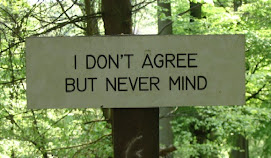
First off: I didn't 'invent' Z Line, all I've done is give a name to something other people were already doing. Indeed, I first read about 'dramatic' positioning changes across the lane width in a UK motorcycle magazine 'Motorcycle and Workshop', in articles written by Ed Reid of Oxford Motorcycle Engineers. This would have been in the mid-late 1980s.
More recently, science has 'caught up' with research on how some animals hunt by maintaining a position relative to their prey which ensures that they do not move relative to their background. All the prey sees - if they're even that lucky - is an object 'looming' against the background.
Remember: moving objects attract attention, moving through a driver's field of view means you're more likely to be seen, and less likely to be forgotten when you have been seen.
It's worth reflecting for a moment on the previous post, and looking at how far - or how close - the main 'at risk' zones are from the junction. Usually you'll be - if you've made the effort to achieve it by not 'hiding' - in plain view of any driver who looks.
Indeed, the Hurt study (formally titled "Motorcycle Accident Cause Factors and Identification of Countermeasures") reported that the average time from the event that starts the collision sequence (such as a car beginning a turn across a motorcycle's path) to the actual impact was 1.9 seconds. A nearly identical research project just finished in Thailand reported the time at 2.0 seconds. In both studies, three-fourths of riders had less than 3.0 seconds between the start of the accident sequence and the crash
By moving across the lane away from the driver you - according to Ouellet - reduce your 'worst case' zone. By moving when the driver is most likely to see you, you attract their attention - you make yourself more conspicuous.
So . . . what is "Z Line"?
Thank you for asking :)
"Z Line combines the 'best' of Ouellet, with 'active' positioning.
Why 'active' positioning? Usually riders respond to what they can see, to achieve an increased safety margin, or gain view, or for turning at a junction, etc. In a way, this is 'passive'.
'Active positioning' takes it a stage further - the rider is positioning to 'make something happen' - in this case to move against the background - so breaking camouflage - and move across the driver's field of view - so be more likley to be seen.
A post-test rider is likely, in an urban situation, to be riding towards the centre line, so achieving a good iew in to side roads and avoiding being 'hidden' by street furniture from the view of a driver in the side road.
Take this a stage further.
Move, fairly briskly, from this dominant position towards the kerb, then back towards the centre line - you'll move substantially further through the driver's field of view than you would by maintaining a constant dominant line.
Timing:
It takes, at most, about four seconds for a driver to check a junction then pull away. If you're much more than that away, the driver will be long gone by the time you arrive there.
But within that four seconds, research has shown that drivers actually 'look' for less than half a second - so you need to be noticed within that (very) short time. Z Line moves mean that at the time the driver is most likely to be looking, you'll be making the most 'dramatic' move against the background scene - so much less likely to be hidden.
The timing for the Z Line is - roughly:
4 secs. from junction: Move left
3.5-3: move right
1.5-1: steady line, as far from the vehicle as possible
These are only approximate timings, to use as a guide.
And this isn't a 'swerve', it's a planned, steady, brisk move across the lane and longer move back, then straight past the junction.
If the vehicle is likely to be crossing from your right, reverse the positioning.
Z Line isn't a 'cure all' - you'll still need to do all the planning explained earlier, but it can make you 'visible' and may reduce your chances of being involved in a SMIDSY crash.
Image posted: This is just an approximation. As mentioned in an earlier post, US roads are different to ours, check out the width of this one in the diagram. What I've attempted to do is overlay a number of things to give an indication of timing and of what Z Line achieves:
- Vertical bars are seconds from junction @ 30mph
- Increased move through field of view shown by diagonals
- Z Line is here across two lanes, usually you'll be on single lane roads in the UK, and even if in a dual-carriageway I probably wouldn't suggest moving so dramatically across both lanes; remember, this is just an indication . . .
I do have a better 'UK' diagram, but it's not currently in 'electronic' form.
.





2 comments:
Malc, you and I think a lot alike.
What you say about "it doesn't matter who's fault it is, the motorcyclist will suffer" is spot on. I've said nearly exactly the same thing in my books.
I'm going to link to your "Z-Line" entries from my highviz.org site. I didn't know about the Ouellet paper ... hopefully that's because it's new and not because I'm such a poor researcher!
Feel free to contact me any time at pat.hahn@state.mn.us. Keep up the good work.
Pat Hahn
Minnesota Motorcycle Safety Center
Author: Ride Hard, Ride Smart; How to Ride a Motorcycle; Maximum Control
I like how 'Z Line' combines active positioning with Ouellet’s techniques to increase visibility.
Post a Comment